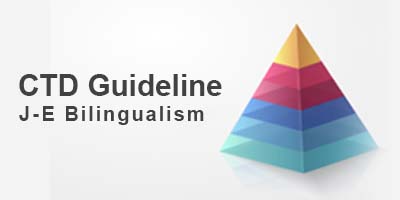
薬生薬審発0202第1号(平成29年2月2日)
ICH HARMONISED GUIDELINE- M4E(R2) – Dated 15 June 2016
Module 2.5 臨床に関する概括評価
2.5.6 ベネフィットとリスクに関する結論
2.5.6.4 ベネフィット・リスク評価
本項では、目的とする適応症に対する申請医薬品のベネフィット・リスク評価に関する申請者の結論を記載すること。これは主要なベネフィット及び主要なリスクの評価並びに比較に用いられた根拠及び判断の簡潔な説明から始めること。加えて、不確実性がエビデンスにどのように影響を及ぼすか、及びそのベネフィット・リスク評価における影響についても説明すること。
Module 2.5 CLINICAL OVERVIEW
2.5.6 Benefits and Risks Conclusions
2.5.6.4 Benefit-Risk Assessment
This section should provide the applicant’s conclusion on the benefit-risk assessment of the medicinal product in the proposed indication(s). This should begin with a succinct explanation of the reasoning and judgment used in assessing and weighing the key benefits and key risks. In addition, the applicant should explain how any uncertainties affected the interpretation of the evidence and their impact on the benefit-risk assessment.
ベネフィット・リスク評価を記載するにあたり、以下の内容を検討すること。
- 評価に対する治療の背景の影響
この議論には、以下の点を含めること。利用可能な場合には患者視点の情報を含めることができる。
○ 予想されるリスクの許容可能性に対する疾患の重症度及び予想されるベネフィットの影響
○ 申請医薬品が既存の治療選択肢に対しどのように位置づけられるか。
- ベネフィット・リスク評価を好ましい結果にするために重要なリスク管理の主要な内容
○ 添付文書案
○ ノンレスポンダーが治療を中止することを容易に判断できるか否か
○ 患者登録や流通制限などの、他のリスク管理活動
When describing the benefit-risk assessment, the following additional aspects should be considered:
- The impact of the therapeutic context on the assessment, which may include information on the patient perspective if available. This discussion should consist of the following:
○ how the severity of disease and expected benefit influence the acceptability of the risks of the therapy.
○ how the medicinal product addresses a medical need.
- Key aspects of risk management that are important in reaching a favourable benefitrisk assessment, such as:
○ the proposed labeling.
○ whether non-responders can be readily identified allowing them to discontinue treatment.
○ other risk management activities, such as registries or restricted distribution systems.
ベネフィット・リスク評価を行うための多くの手法がある。本ガイドラインにおいて、特定の手法を規定するものではない。一般的にはデータの解釈及びベネフィット・リスク評価を明確に示す記述的な手法で十分である。申請者は評価における判断及び不確実性を定量的に表現する方法を選択することもできる。提出されたエビデンスを用いてベネフィット及びリスクの対比及び/又は比較の分析を提示することができる。しかしながら、申請者はそのような方法を用いる前に、その有用性、複雑性、その方法がどの程度確立されたものか、結果の解釈の容易さを考慮すること。このような方法を用いた場合には、概要及び結論の説明は本項に記載し、方法及び結論の詳細は 2.5.6.5 項に添付すること。主要な点又は結論を支持する、又はより明確にするために、本項において表や図を用いることができる。
There are many approaches available for conducting the benefit-risk assessment. This guideline does not prescribe a specific approach. A descriptive approach that explicitly communicates the interpretation of the data and the benefit-risk assessment will generally be adequate. An applicant may choose to use methods that quantitatively express the underlying judgments and uncertainties in the assessment. Analyses that compare and/or weigh benefits and risks using the submitted evidence may be presented. However, before using any method, the applicant should consider its utility, complexity, the extent to which the method is established, and the ease of interpretation of the results. In this situation, the written summary and explanation of the conclusions should be provided in this section, but the detailed presentations of the methods and results should be appended in Section 2.5.6.5. Tables or figures may be included in this section to support or provide greater clarity to key points or conclusions.










